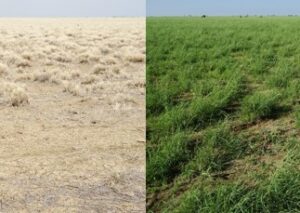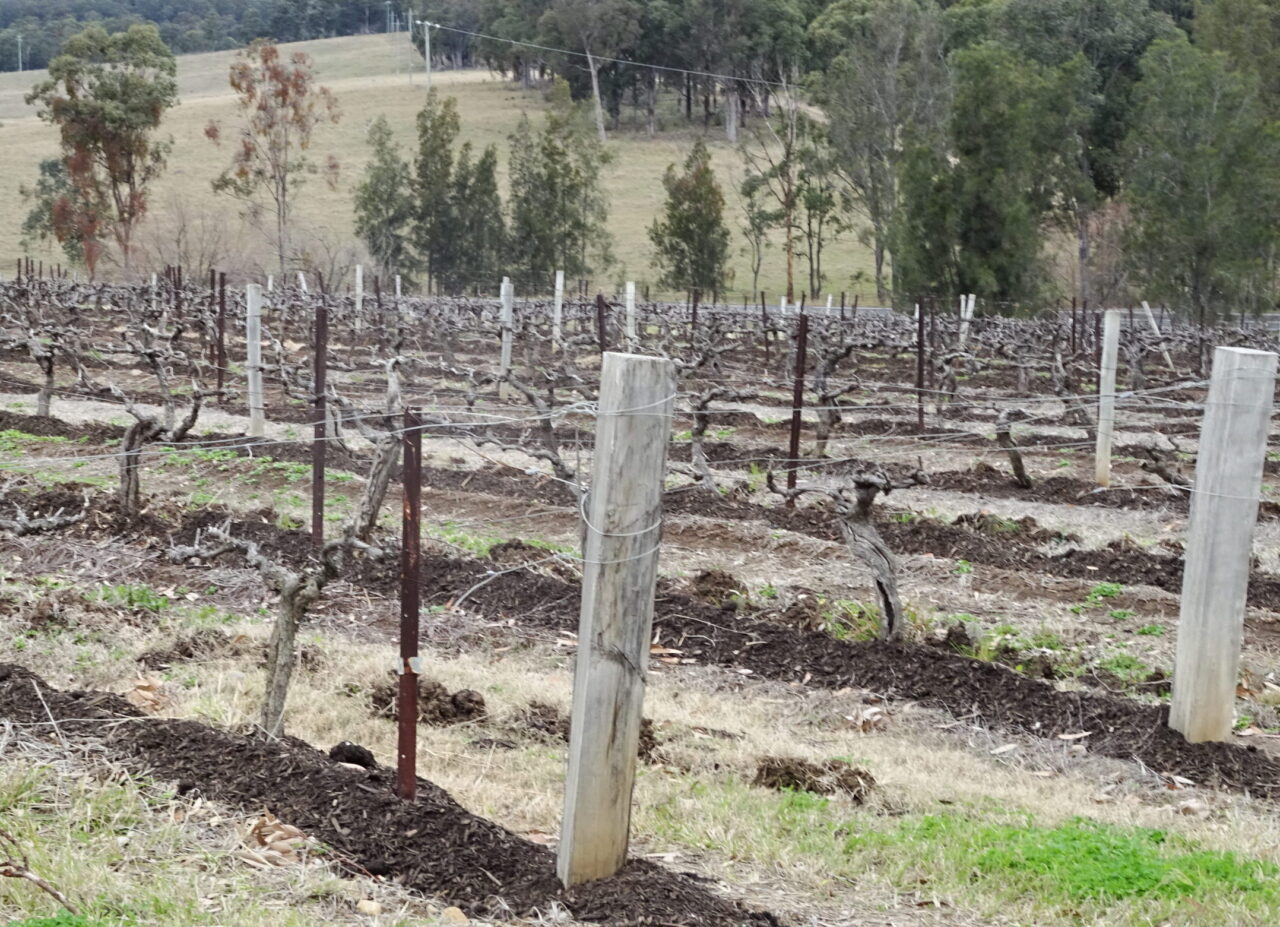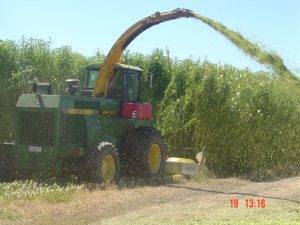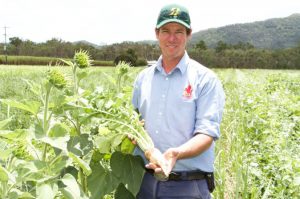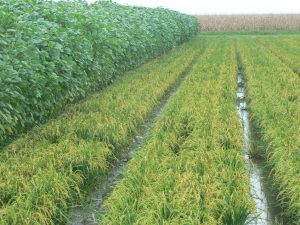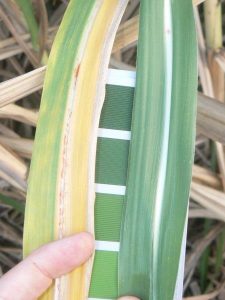There are several reasons for me to write an opinion piece about soil health, not least that (for a crust) I market in Australia a technology called Solvita™ – which I think is one of the few tools available in the world that comes close to revealing the relevant processes of agricultural soil biology. Unfortunately it could be a long and technical sermon….
Instead I will describe a scene that I think will be played-out on thousands of farms Down-Under in the not-too-distant future. In a sense, I want to make only the point that it is the putting-into-practice aspect of soil biology which is important for us to master at this time.
***
It was the end of a long day. George switched off the tractor and jumped to the ground.
Max, his agronomist, was waiting for him in the shed leaning against his new, gleaming-white utility.
“You know, Max, we’re paying you too much.”
“Your crops have never looked better, George, and this will show you why.” He pulled out the box of jars that had become part of his standard kit and placed them in two lots on the workbench. “It’s not that big a secret – just changed the way you manage nitrogen so you’re now getting the benefits from those cover crops.”
George grabbed a couple of beers from the nearby fridge, opened them and gave one to Max.
“I took these soil samples from the fields you’ll sow to maize, and ran the CO2 respiration tests overnight. This one is from the back paddock where you grew the cover crop and this one from the bare-fallow block. Can you see the difference?”
George knew exactly what he was looking at; the probe in the cover-crop sample was a greenish-yellow colour (a reading of about 3.5) so the soil was well supplied with carbon and had good microbial activity, the other probe was grey (1.7) so the fallow soil was poor in carbon and had not much microbial activity.
“A no-brainer,” George muttered, “less fertiliser following the cover crop.”
“Yes, but I also ran the new SLAN test.” Max picked up another jar from each lot. “SLAN measures the nitrogen that is easily released when the organic residues break-down. You see the yellowy-green colour of this probe – it gave 178ppm Labile Amino-N on the Colour Reader. So after the cover crop there is sufficient soil N for the maize at sowing but I think we should still retest at side-dressing. The fallow soil had nearly no ammonia in the jar, the probe’s still yellow – so the maize will respond to fertilizer N at sowing.”
George thought for a moment. “So the CO2 test is for the process of N release through microbial activity and the SLAN test is for the amount of N that can be released from organic matter. Does that all makes sense to you, Max – you know – the science and technology behind the tests?”
Max nodded, “I reckon it does…, the best in the world probably. And I’ve sent soil samples to the lab. With the early season rain we’ve had, they should come back with elevated nitrate-N levels in the cover crop block. So it will all add up. I’ll work through the data: growth and yield targets, crop N requirement, soil N supply and C:N ratio of the residues; and then calculate the amount and type of fertiliser the maize will need – you’ll save some…, but it’s not just about saving money on fertiliser, it’s also about getting N into the crop when it uses it.”
George smiled a wry smile, “Your shout,” he said to Max, who grabbed a couple more beers.
***
Innovative farmers are starting to trial these ideas:
Sunflower and soybean growing in the inter-row of Simon Mattsson’s sugarcane crop at Mackay in Queensland. The intercrops will be felled using a crimp-roller before the sugarcane has achieved a full canopy covering the inter-row. The idea is that polyculture changes the way carbon and nitrogen is cycled in the soil, improving both soil health and the timing of nitrogen supply to the sugarcane crop. More efficient nitrogen use could result in better fertiliser strategies in the sugarcane crop (Photos courtesy of Simon Mattsson).
***
And how a scientist may explain it:
The primary purpose of agriculture is to produce plants, and soils should be managed with that outcome in mind. Nearly everywhere in Australia farmers need to grow soil carbon. They need to add plant residues and organic matter (OM) to the soil with the focus on developing the activity of soil microbes to turnover carbon and release nitrogen (N) to match the needs of crops. Only then can farmer effectively apply fertiliser N to feed the soil biology and crop, and grow yields.
The truth is that soil biology will adjust to the purpose and the way in which the soil is used. There is no point to infusing bacteria and fungi into a soil if their activity is not underpinned by a supply of carbon from OM, nor is there immediate value unless the amount and timing of released N matches the uptake pattern of the species growing in the soil.
In well-managed soils, the benefit of soil biology to farmers and land managers is that nutrient supply to crops becomes easier to work out. Two pools of nutrients become active: firstly and more importantly the soil OM pool can absorb then release N to the crop, and secondly the pool of nitrate-N in the soil solution can be topped-up with fertiliser to supply the crop and manage the rate of OM decomposition. When the nitrogen in the OM pool is managed well, the benefit to the environment is that fertiliser N surplus to what the crop needs is not applied, and that fertiliser is not causing pollution of the groundwater.
The agronomy of crop N supply is not rocket science, but generally in agriculture we drag the chain on this issue. Calculations of N fertiliser uptake by crops remain intractably just above the half-efficient mark. Is that figure real or does it reflect our inability to measure the dynamics of the organic N pool? Granted, measuring N immobilisation into OM in real-time is difficult and, before now, measuring the availability of N from OM to crops has been time-consuming and expensive. The technology from Solvita™ changes that circumstance. In the future we should expect that the amounts and timing of N released from OM will become numbers in the head of the farmer. Ask your agronomist for advice.
© Stephen Ockerby 2015

